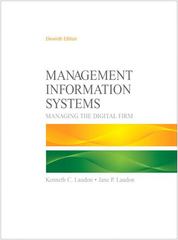Question
Assignment: If this is a brand new topic, please do watch the front end of my lecture for a refresher on carbon and nitrogen cycling
Assignment: If this is a brand new topic, please do watch the front end of my lecture for a refresher on carbon and nitrogen cycling and how these management practices fit in!
Part 1: Carbon farming in the media
Although the importance of soil carbon to farming has been long recognized, in recent years carbon farming has increased greatly in popularity and in media coverage as a strategy to sequester carbon in the ground while being economically advantageous for producers. This film shows you an example of this, and also serves as a foundation for thinking about how management links to carbon cycling.
Watch Short Film (5 minutes):(featuring Ted Chamberlin Ranch in California)
Part 1 questions:
1a. Which components of the ecosystem are mentioned that contain carbon?
1b. Which processes are mentioned that move the carbon around the ecosystem?
1c. Which goals (related to carbon) are mentioned by the land managers or ranchers?
Part 2: Management Impacts on Greenhouse Gas (GHG) Emissions
Conservation practices such as reduced tillage have many different types of impacts on the ecosystem. In addition to monitoring impacts on metrics such as soil erosion and soil quality, it is critical to also evaluate the impacts on carbon sequestration and greenhouse gas (GHG) emissions.
Part 2a. The Natural Resource Conservation Service (NRCS) has prepared a ranking of conservation practices for the goals of carbon sequestration and GHG reductions (see Appendix I from Which practices are listed here as beneficial for GHG reductions that are mentioned by organic producers in the film?
Part 2b.
- In the results output, what do positive values indicate? What do negative values indicate?
Part 2c.
- Now, let's run a scenario in COMET-Planner.
- Step 1: choose a location (can be location of your scenario farm perhaps)
- Step 2: Select cropland management (unless grazing lands is more appropriate to your farm scenario)
- Step 3: Select 3 of the practices listed in your answer to 2a. For each of them, enter 100 for the acreage (to standardize responses somewhat).
- Step 4: After entering in 3 of the practices, download your COMET-Planner Results and attach to your assignment submission the file or a screen shot...whatever is easiest for you.
2d.
Which strategy is most beneficial to reducing carbon dioxide emissions? Which strategy is most beneficial to reducing nitrous oxide emissions? Which offers the most beneficial in terms of the overall "total CO2- equivalent" (this takes into account impacts on all three gasses)?
2e. Back to the
For each of the 3 strategies you included in the COMET planner test, look them up in the Table of Contents and use the "implementation information" (combined with your knowledge of these practices) to explain why they have the impact that they have on emissions and C storage.
Step by Step Solution
There are 3 Steps involved in it
Step: 1

Get Instant Access to Expert-Tailored Solutions
See step-by-step solutions with expert insights and AI powered tools for academic success
Step: 2

Step: 3

Ace Your Homework with AI
Get the answers you need in no time with our AI-driven, step-by-step assistance
Get Started


